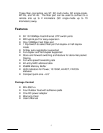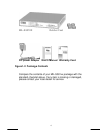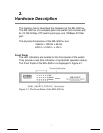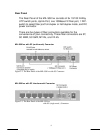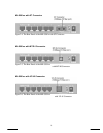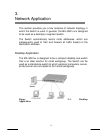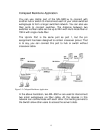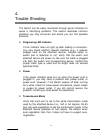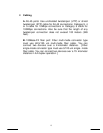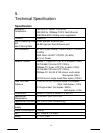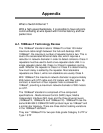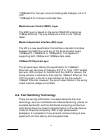
19
A switch is an intranetwork device designed to increase
performance through LAN segmentation. Switching uses
microsegmentation to isolate traffic. Upon arrival at the hub, a
packet's destination address is read and the packet is sent
directly to the relevant port - not to all ports, as it would be with a
repeater.
For networks experiencing a shortage of bandwidth, the
introduction of a 10Mbps switch will only move the bottleneck
from the hub to the 10Mbps-server pipe. A minimal improvement
will be apparent, due mainly to the decrease in the number of
packet collisions.
To significantly increase performance it is necessary to open up
the pipe to the server. In the past this was achieved by
segmenting the network and installing multiple NICs in the server,
or putting the server on a high-speed backbone such as FDDI.
Vendors have now integrated a Fast Ethernet downlink into the
switch for connection to either the server or backbone. Depending
on your circumstances, this can result in a seven to eight-fold
increase in performance.
As a technology it is easier and cheaper to implement than FDDI
and will run on both multimode fiber and category 5 cabling. Links
can also be made directly to servers, hubs/switches and power
users without the need for costly hardware or recabling. However,
Fast Ethernet is not suitable for a campus-wide backbone as it
suffers from hop and distance limitations, as well as not providing
the redundancy of FDDI and ATM.
How Fast Ethernet is implemented depends on the structure of
your environment, the location of users and servers and the use
of virtual LANs, which allow users to be associated with a specific
workgroup regardless of physical location. This is particularly
important if you have client/server databases being accessed
throughout your organization, or staff in various locations sharing
large amounts of data.



